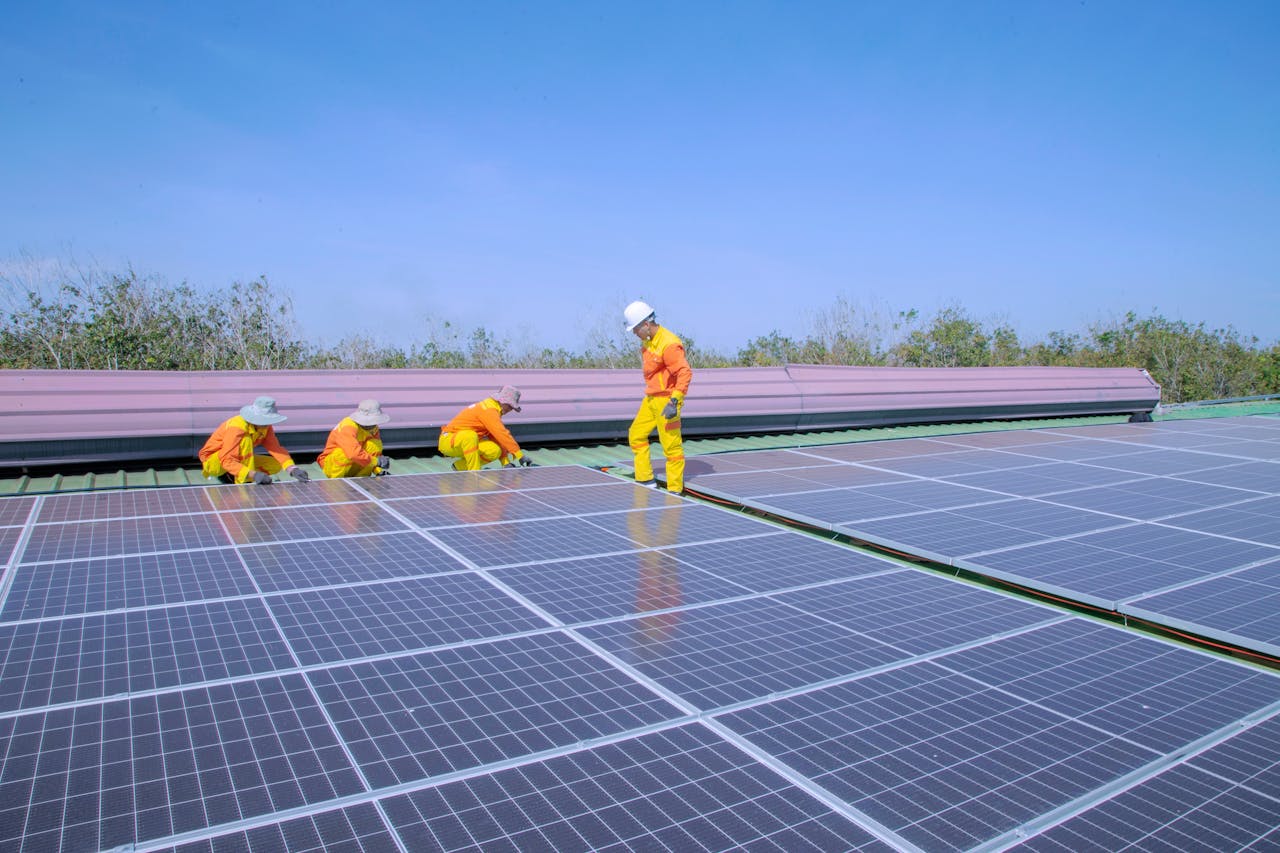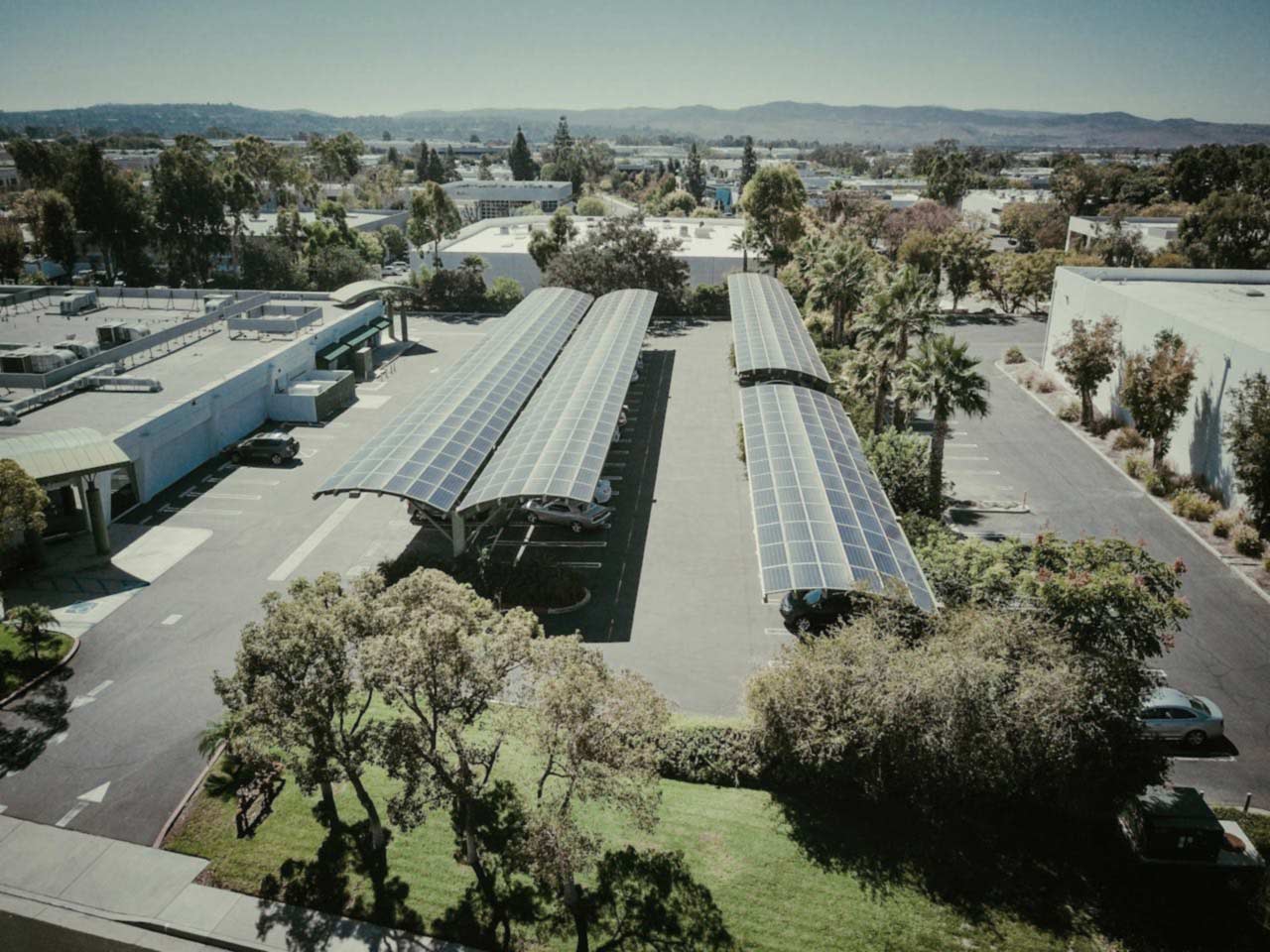Building durable, efficient ground mount solar power plants begins with one critical component: the module mounting structure. These structures are essential for ensuring the longevity, stability, and output of a solar project.
The first step in setting up a ground mount solar system is establishing a robust foundation. This can be achieved through methods like pile foundations or ramming. A solid base ensures long-term structural integrity and resilience under varying environmental conditions.
Types of Module Mounting Structures
Based on the design of the plant and the cost constraints involved, different module mounting structures may be used while carrying out ground-mounted solar plant installation. Here, we detail the specific types of module mounting structures that are used in ground mount installations.
Fixed Tilt Structures:
With Fixed Tilt Structures, the modules are raised on structures made of Galvalum or Posco. These are held firmly to the ground with a strong foundation. The Fixed Tilt structures are designed at a year-round optimum tilt, as the tilt of the modules cannot be changed once the structures and modules are installed. They’re widely used in commercial and utility-scale ground mount solar projects due to their simplicity and cost-effectiveness.
Seasonal Tilt Structures:
These structures have holes drilled into the bow of the base supporting structure. These holes can be used to manually vary the tilt of the modules by removing and re-inserting the screws that secure them to the vertical supports. The tilt of the modules can be varied from season to season, with changes in the arc of the sun’s path across the sky. In most cases, the tilt of the modules varies with the seasonal changes of summer and winter.
Trackers:
As a technological upgrade to the seasonal tilt structures, trackers can change the tilt of modules in a more closely calibrated manner. This automates the manual process of physically changing the tilt of the modules to the optimum angles. There are two highly prevalent types of trackers:
Single Axis Trackers: These permit the movement of the module along a single axis, which can be maintained uniformly along a single row or a block of modules. This can be thought of as lending the module a single axis of rotation. Single-axis trackers can allow the movement of the module along a vertical axis or a horizontal axis. Single axis trackers can also be installed in tiled module installations as well.
Dual Axis Trackers: Offer even greater precision by allowing movement on two axes. These follow the sun’s trajectory more accurately, maximizing energy production across all seasons.
The Design of Module Mounting Structures
In order to derive highly efficient designs, software tools may be employed, wherein local standards are used for reference. The inputs used are:
- Location (Latitude and Longitude): Latitude and longitude impact the optimal tilt angle.
- Module Dimensions and Weights: With module design changing with rapid technological advancement in terms of Bifacial, Half-cut cells, etc. and increasing capacities of solar modules, the weights and dimensions of the modules must be examined carefully from design to design as they have a critical impact on the structural integrity of the installation.
- Material Selection: Some common materials used in the manufacture of structures are Galvalum, Posco, and hot-dipped galvanised metallic structures. The material must allow for the structure to be sturdy so as to withstand the load of the module and the wind load.
With these inputs, the optimised structure design and reactions for the foundation design are obtained. Once the structure design is approved internally, it is required to be certified by the local chartered engineer.
Thus, the overall technical soundness of the plant can reach high levels of operation only when the module mounting structures are designed and constructed with great care and with close attention to detail. Partnering with the top solar companies in India is vital here!
Why Mounting Matters in Ground Mount Solar Systems
The efficiency of a ground mount solar installation doesn’t depend solely on the panels—it begins with the structure beneath. A well-designed mounting system ensures the plant’s technical performance and durability over decades.
That’s why working with the top solar companies in India, like Enerparc, ensures you get both high-performance panels and expertly engineered support systems.
Frequently Asked Questions (FAQs)
What is a ground mount solar installation?
A ground mount solar installation is a type of solar power system where solar panels are mounted on structures installed directly into the ground, rather than on rooftops. These systems are ideal for large-scale or open-space installations and offer flexibility in positioning for maximum sun exposure.
What are the benefits of using ground mount solar structures?
Ground mount solar structures provide better airflow for cooling, more flexibility in orientation and tilt, and often higher energy yields compared to rooftop systems. They are also easier to access for maintenance and upgrades.
What types of mounting structures are used in ground-mounted solar systems?
There are three main types:
– Fixed Tilt Structures: Set at a permanent angle.
– Seasonal Tilt Structures: Allow manual tilt adjustments.
– Solar Trackers: Automatically adjust tilt to follow the sun, with single-axis and dual-axis options.
What materials are used for ground mount solar structures?
Common materials include Galvalum, Posco steel, and hot-dipped galvanized metals. These are chosen for their durability, corrosion resistance, and strength to support heavy solar modules and withstand environmental conditions.
How is the foundation for a ground mount solar structure built?
The foundation is critical to the stability of the structure. It can be constructed using methods such as pile driving, ramming, or ballasted foundations, depending on soil conditions, design load, and project location.






